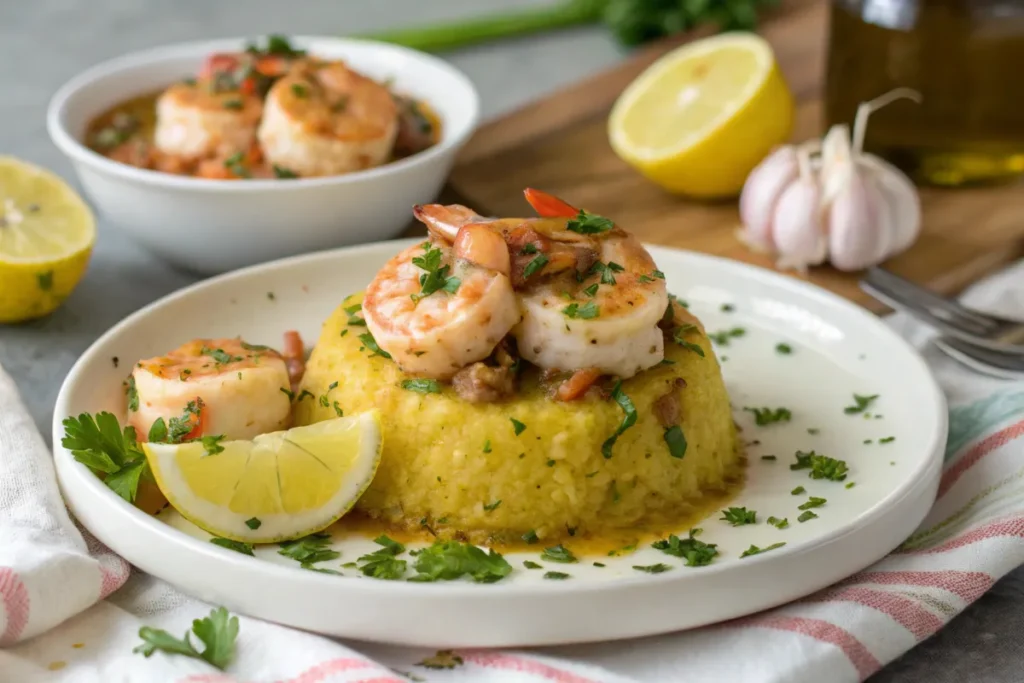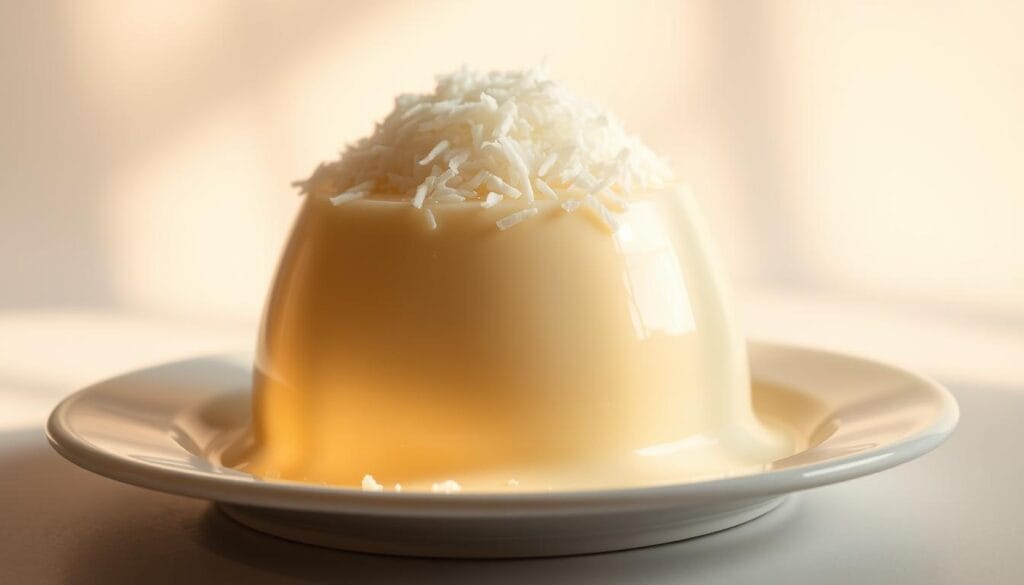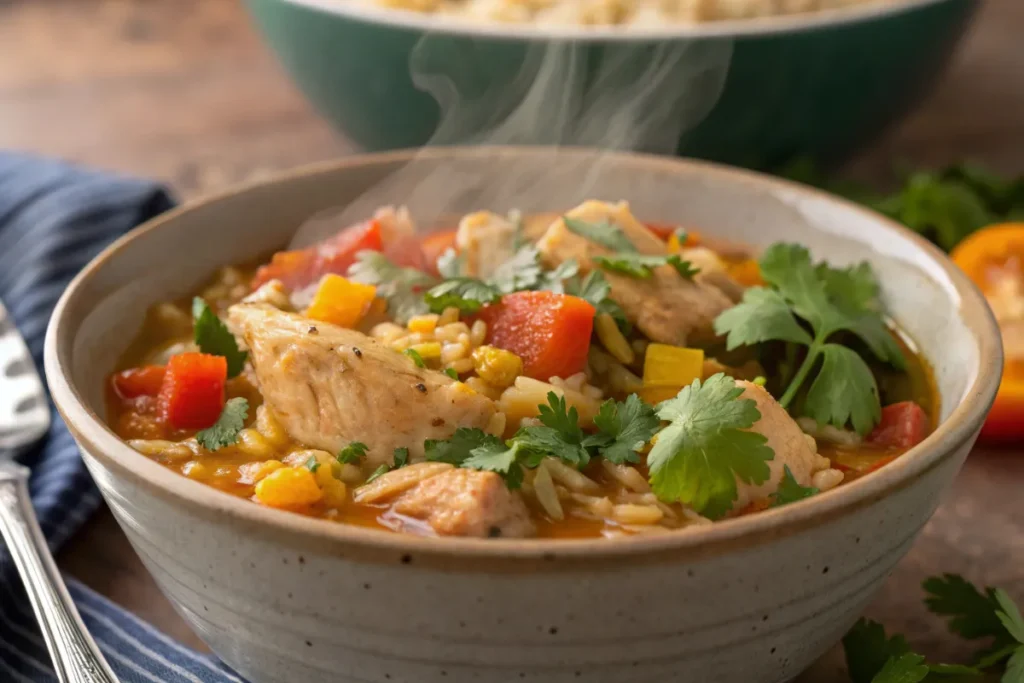My grandmother’s kitchen was a magical place. Puerto Rican recipes came to life there. The smell of sofrito simmering in a cast-iron pot filled our home. It created memories that lasted forever.
Puerto Rican cuisine is a mix of flavors that shows the island’s rich history. From the mountains to the coast, each dish has its own story. These recipes are more than food; they celebrate community and connection.
If you love cooking or want to try new dishes, this guide is for you. It will take you to the heart of Puerto Rican cooking. You’ll learn about traditional sofrito, essential ingredients, and cooking techniques passed down through generations.
Table of Contents
The Rich Heritage of Puerto Rican Cuisine
Puerto Rican cuisine is a delicious mix of flavors from the Taíno, African, and Spanish traditions. Each dish tells a story of cultural fusion. It shows how history has shaped the food.
The island’s food is a result of cultural exchange. It turns simple ingredients into amazing dishes. These dishes show Puerto Rico’s lively spirit.
Culinary Roots and Influences
Puerto Rican cuisine comes from a mix of cultures:
- Native Taíno contributions of root vegetables and cooking techniques
- African imports like plantains, yams, and unique spices
- Spanish colonial culinary traditions
Traditional Cooking Methods
Authentic Puerto Rican recipes use old cooking methods. These include:
- Slow-cooking in cast iron pots
- Preparing mofongo using wooden mortars
- Grilling on traditional burén griddles
Cultural Significance
“Food is the heart of Puerto Rican culture, connecting families and preserving heritage with every meal.”
Dishes like mofongo are more than food. They are memories of cultural strength and community ties.
| Cultural Influence | Key Contributions |
|---|---|
| Taíno | Root vegetables, cooking platforms |
| African | Plantains, spices, cooking techniques |
| Spanish | Rice, meats, culinary tools |
Knowing the roots of Puerto Rican cuisine helps us see its depth. It turns every meal into a celebration of culture.
Essential Puerto Rican Ingredients and Seasonings
Puerto Rican cuisine is full of vibrant flavors. Each ingredient has a story of cultural heritage. Understanding these ingredients is key to making authentic Puerto Rican dishes.
Understanding Sofrito: The Heart of Puerto Rican Cooking
Sofrito is the heart of Puerto Rican cooking. It’s a magical blend that turns simple ingredients into amazing meals. This aromatic base includes:
- Culantro (stronger than cilantro)
- Onions
- Garlic
- Ají dulce peppers
- Cilantro
- Olives
- Capers
“Sofrito is more than an ingredient—it’s the soul of Puerto Rican cuisine.”
Common Spices and Aromatics
Puerto Rican kitchens are filled with vibrant spices. These spices add depth and complexity to every dish. Key aromatics include:
| Spice | Flavor Profile | Common Use |
|---|---|---|
| Adobo | Savory, slightly spicy | Meat marinades |
| Sazón | Earthy, rich | Rice and bean dishes |
| Annatto Seeds | Nutty, peppery | Color and flavor enhancement |
Traditional Herbs and Vegetables
Local produce is key in Puerto Rican recipes. Some essential ingredients include:
- Recao (Culantro): A robust herb with broad leaves
- Ají dulce peppers: Sweet and aromatic
- Yautía (Taro root): Starchy and versatile
Mastering these ingredients will unlock the true flavors of Puerto Rican cuisine. You’ll create memorable meals.
Classic Puerto Rican Recipes for Beginners
Starting with puerto rican recipes might seem hard, but it’s easy with the right help. You’ll make tasty dishes that show off the island’s lively food culture. These easy recipes will introduce you to Puerto Rico’s rich tastes.
Let’s look at some key recipes to learn the basics of Puerto Rican cooking:
- Arroz con gandules (Rice with pigeon peas)
- Tostones (Fried plantains)
- Pernil (Roasted pork shoulder)
“Cooking is about passion, and Puerto Rican cuisine is all about sharing love through food.” – Traditional Puerto Rican saying
The highlight of our beginner’s list is arroz con gandules. It’s a beloved national dish with rice, pigeon peas, and lots of flavor. It’s a great way to learn about Puerto Rican cooking.
| Recipe | Difficulty Level | Preparation Time |
|---|---|---|
| Arroz con Gandules | Beginner | 45 minutes |
| Tostones | Easy | 20 minutes |
| Pernil | Intermediate | 4-5 hours |
Each recipe gives a special look into Puerto Rico’s food traditions. Start with simple dishes like tostones, then move to more complex ones. Your kitchen will soon smell like Puerto Rico.
Mastering Arroz con Gandules: The National Dish
Puerto Rico’s food scene is at its best with arroz con gandules. This dish is more than a meal; it’s a celebration of culture and taste.

To make authentic arroz con gandules, you need to know a few key steps. The secret is in the sofrito base. It’s what gives the dish its deep, rich flavors.
Preparing the Perfect Sofrito Base
Sofrito is the heart of many Puerto Rican dishes. Your sofrito should have:
- Green bell peppers
- Onions
- Garlic
- Culantro or cilantro
- Ajies dulces (sweet peppers)
Rice Cooking Techniques
Arroz con gandules needs careful rice cooking. Use a caldero (heavy-bottomed pot) for the right texture. It also helps create the crispy rice layer at the bottom.
Adding Authentic Flavors
To make your arroz con gandules even better, add these classic Puerto Rican ingredients:
| Ingredient | Purpose |
|---|---|
| Alcaparrado | Adds briny complexity |
| Sazón | Provides traditional seasoning |
| Pigeon peas | Authentic protein component |
“Arroz con gandules is not just a dish, it’s a Puerto Rican culinary tradition passed through generations.”
With practice, you’ll make arroz con gandules that rivals any restaurant. It’s a way to celebrate Puerto Rico’s rich food heritage.
For More Dinner Recipes check : Blackstone Chicken Recipes
Mountain Region Specialties and Traditional Dishes
The mountainous regions of Puerto Rico are a treasure trove of flavors. They tell a story of tradition and local ingredients. Your journey through puerto rican recipes will reveal the hearty specialties of this remarkable terrain.
In the central highlands, you’ll find incredible ingredients. Plantains, yuca, yautía, and ñame grow in these fertile valleys. They create a diverse palette of flavors for traditional dishes.
“The mountains of Puerto Rico are not just a landscape, but a kitchen of incredible diversity and flavor.”
- Alcapurrias: Fritters made from green bananas and yautía, filled with savory meat
- Viandas: A medley of root vegetables showcasing local produce
- Sancocho: A hearty stew representing mountain cooking traditions
Puerto Rican coffee from these regions is famous worldwide. It offers a rich aroma that complements the local cuisine. Dishes like Guanimes con Bacalao show the region’s culinary creativity. They combine local ingredients with traditional cooking methods.
Exploring puerto rican recipes from the mountain regions is a journey. You’ll discover a culinary tradition rooted in local agriculture and generational cooking. Each bite tells a story of cultural heritage and the bountiful landscape of Puerto Rico’s interior.
Authentic Puerto Rican Meat Dishes
Puerto Rican cuisine is full of meat dishes that show off the island’s rich food history. You’ll find tender beef stews and juicy pork dishes. These recipes add vibrant flavors to your meals.
Carne Guisada: A Hearty Beef Stew
Carne guisada is at the heart of Puerto Rican comfort food. It turns chuck roast into a tender treat. The beef is slow-cooked with spices that make it irresistible.
- Preparation time: 10 minutes
- Cooking time: 2 hours 30 minutes
- Serves: 4-5 people
Traditional Pork Preparations
Puerto Rican pork dishes like pernil (roasted pork shoulder) show the island’s skill in meat cooking. These recipes use herbs and spices to make the meat flavorful. They’re perfect for family gatherings.
Chicken and Seafood Favorites
Asopao, a favorite Puerto Rican chicken and rice soup, captures the island’s essence. It’s a comforting dish that shows Puerto Rico’s rich food traditions.
“Every puerto rican recipe tells a story of family, tradition, and love.” – Puerto Rican Culinary Expert
Trying out carne guisada or other Puerto Rican recipes is a tasty trip through the island’s food scene.
Street Food Favorites and Snacks
Puerto Rico’s street food scene is full of flavor and tradition. You can find delicious snacks from coastal kiosks to city markets. These snacks show off the island’s rich culinary heritage.
Let’s dive into some iconic street food favorites that will take you to the Caribbean:
- Bacalaitos: Crispy cod fritters loved at beach stands
- Empanadillas: Fried turnovers with savory fillings
- Pinchos: Grilled meat skewers full of flavor
- Alcapurrias: Fritters made from green bananas and taro root
No visit to Puerto Rico’s street food is complete without malta. It’s a sweet, non-alcoholic malt drink that locals love. It pairs perfectly with the crispy, salty bacalaitos, balancing the rich flavors.
“Street food is the heartbeat of Puerto Rican culinary culture, telling stories through every bite.”
If you’re looking for a quick snack or want to make Puerto Rican street food at home, these recipes are for you. Each bite is a piece of history and passion from generations of cooks.
Sweet Treats and Desserts from Puerto Rico
Puerto Rican cuisine is full of sweet treats that show the island’s lively spirit. You’ll find creamy coconut puddings and festive holiday sweets. These desserts share stories of cultural richness and tasty traditions.
Tembleque: A Coconut Lover’s Dream

Tembleque is a key Puerto Rican dessert that captures the island’s flavors. It’s a creamy coconut pudding made from simple ingredients. When you make authentic Puerto Rican recipes like tembleque, you’ll need:
- Coconut milk
- Cornstarch
- Sugar
- Salt
- Ground cinnamon for garnish
Traditional Holiday Sweets
Puerto Rican holiday desserts make family gatherings unforgettable. Arroz con dulce (coconut rice pudding) and buñuelos de viento (light, crispy fritters) are loved by all. They’re recipes that have been passed down through generations.
Fruit-Based Desserts
The tropical landscape of Puerto Rico inspires fruit-based desserts. Limber, refreshing frozen fruit pops, and dulce de papaya highlight the island’s fruit in sweet ways.
“In Puerto Rican desserts, every bite tells a story of tradition and passion.” – Puerto Rican Culinary Experts
By mastering these tembleque and other Puerto Rican recipes, you’ll bring a taste of the Caribbean to your kitchen.
Tips for Authentic Puerto Rican Cooking at Home
Bringing Puerto Rican flavors to your kitchen is more than just ingredients. It’s about passion and technique. Start by mastering sofrito, the key to traditional dishes.
- Stock your pantry with essential ingredients like adobo and sazón
- Invest in traditional cooking tools such as calderos (heavy-bottomed pots)
- Learn to prepare homemade sofrito from scratch
- Understand proper seasoning techniques for meats and rice dishes
“Cooking Puerto Rican food is about connecting with tradition and family.”
When making sofrito, keep these tips in mind:
| Ingredient | Quantity | Storage Method |
|---|---|---|
| Green Bell Peppers | 2 | Refrigerate up to 2 weeks |
| Cubanelle Peppers | 2 | Freeze in ice trays |
| Ají Dulces Peppers | 15 | Process in 14-cup food processor |
Don’t be afraid to try new things and make these recipes your own. Every family has their own special way of making Puerto Rican dishes.
Conclusion
Your journey through Puerto Rican recipes has shown you a world full of flavor and culture. These recipes are more than food; they open a window into the island’s history. They mix Spanish, African, and indigenous traditions into dishes that tell stories with every bite.
Cooking Puerto Rican dishes is an art that connects us deeply. The techniques and ingredients you’ve learned are more than just steps. They invite you to feel the heart and soul of a culture. From the fragrant sofrito to the comforting mofongo, each dish carries family traditions and love.
Start cooking Puerto Rican dishes and make them your own. Share these recipes with your family and friends. Whether it’s a big celebration or a cozy dinner, these recipes will bring the Caribbean’s warmth to your table. ¡Buen provecho!
FAQs
What is the famous food in Puerto Rico?
Puerto Rico is famous for dishes like mofongo, lechón asado (roast pig), arroz con gandules (rice with pigeon peas), and pastelón (a plantain-based lasagna). Puerto Rican cuisine blends Spanish, African, and Taíno influences, making it unique and flavorful.
What is the national dish of Puerto Rico?
The national dish of Puerto Rico is arroz con gandules y pernil. This dish consists of seasoned rice with pigeon peas, often served with pernil (slow-roasted pork shoulder), a favorite for holidays and celebrations.
What are popular appetizers in Puerto Rico?
Popular appetizers include:
- Alcapurrias – Fried fritters made from green bananas or yuca, filled with seasoned meat.
- Bacalaitos – Crispy codfish fritters.
- Sorullitos – Sweet cornmeal fritters, sometimes served with cheese.
- Empanadillas – Turnovers filled with meat, cheese, or seafood.
- Tostones – Twice-fried plantain slices, often served with garlic sauce or mayo-ketchup.
Is mofongo a Puerto Rican dish?
Yes! Mofongo is a signature Puerto Rican dish made from mashed fried green plantains mixed with garlic, pork cracklings (chicharrón), and broth. It’s often served with shrimp, chicken, steak, or a flavorful sauce. While similar dishes exist in other Caribbean countries, mofongo is a staple of Puerto Rican cuisine.



